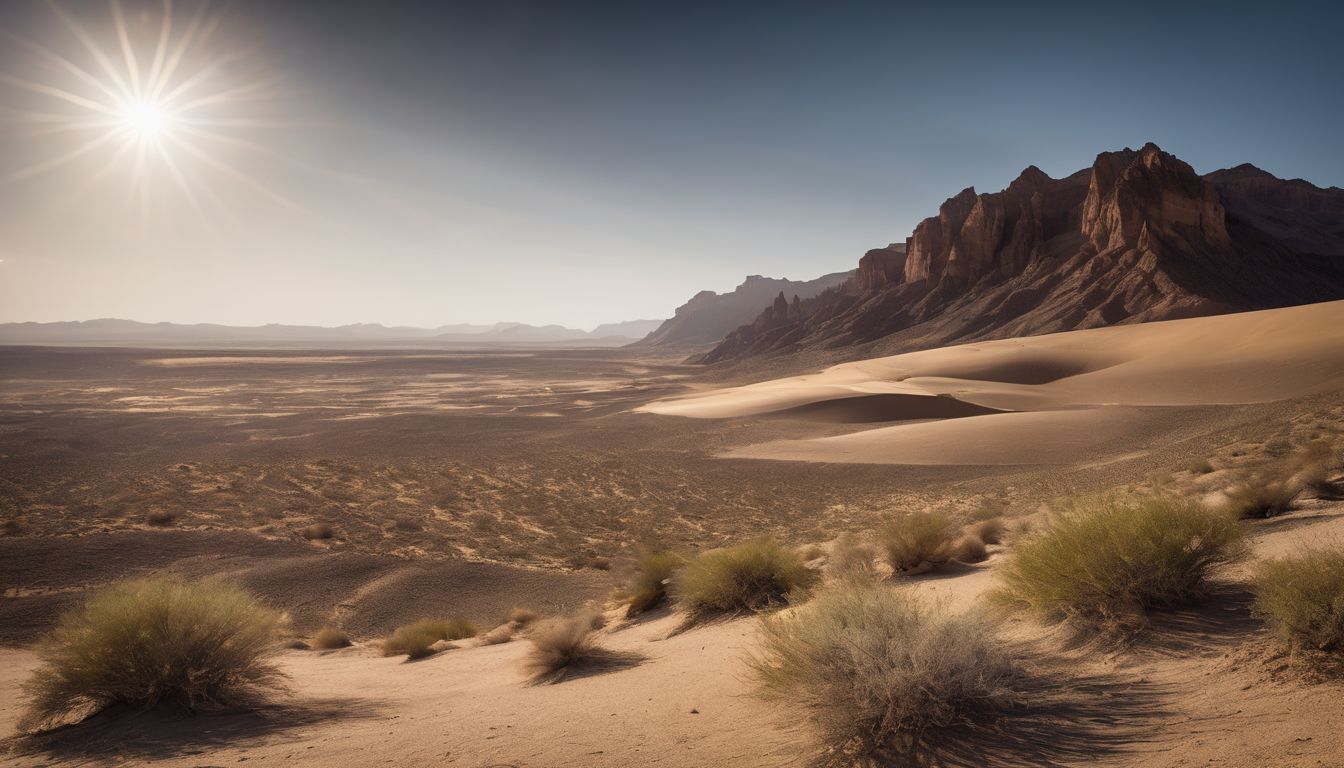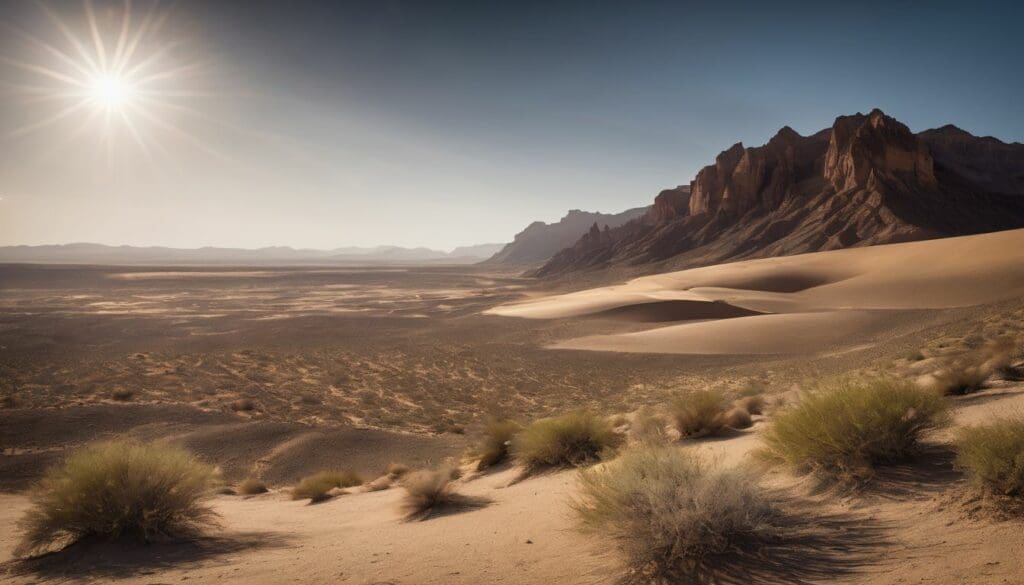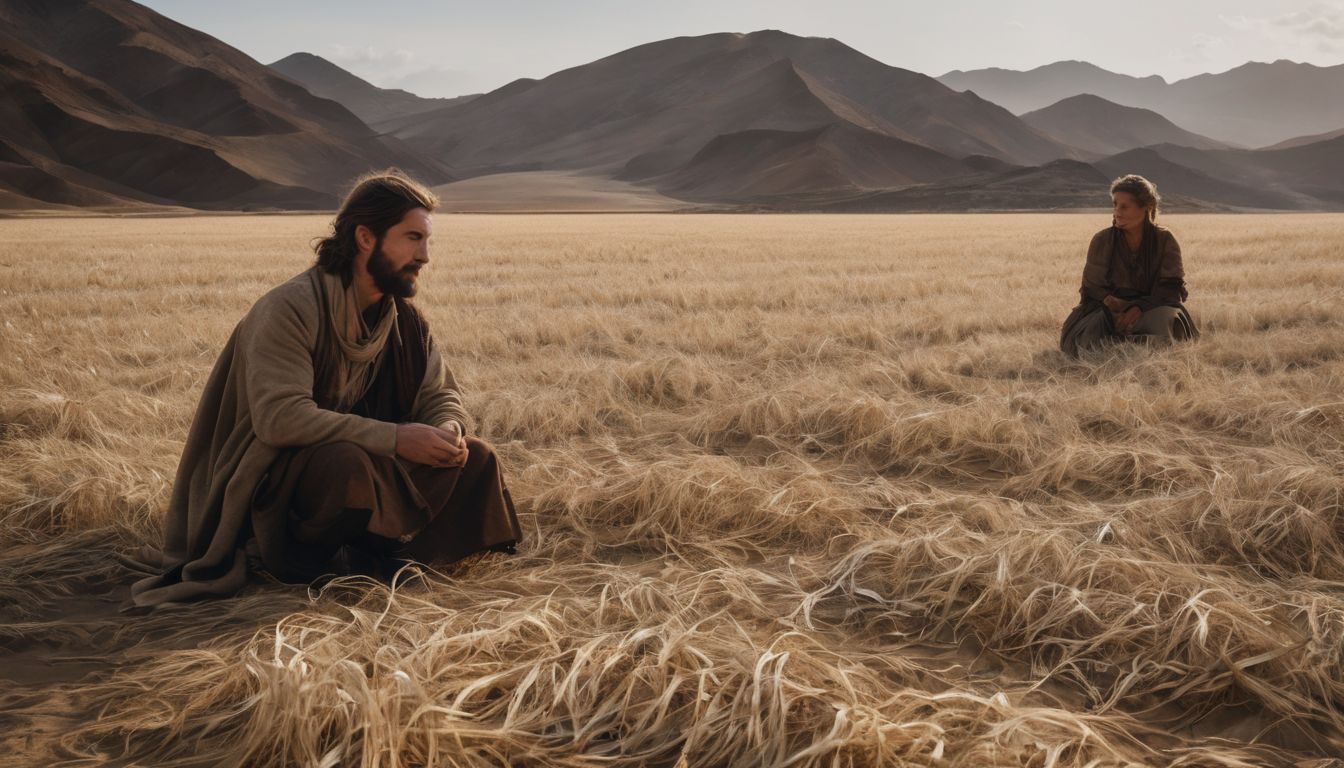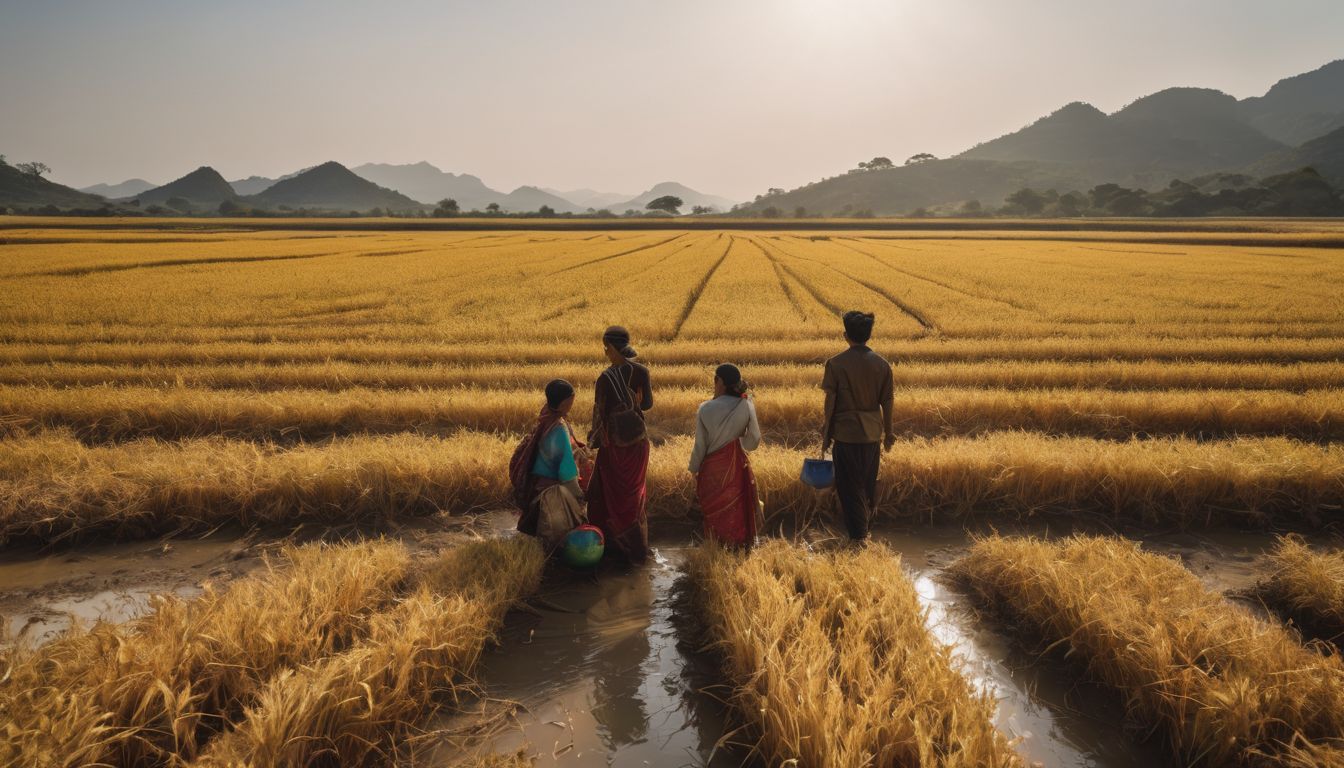 Climate change is worrying everyone these days, from kids to grandparents. Around the globe, temperatures are creeping up, with scientists recording a 1°C increase since the late 19th century.
Climate change is worrying everyone these days, from kids to grandparents. Around the globe, temperatures are creeping up, with scientists recording a 1°C increase since the late 19th century.
This blog will break down global warming into bite-sized pieces, helping you grasp its causes and consequences. Let’s dive in and make sense of it all!
Key Takeaways
- Global warming leads to rising average temperatures of Earth’s atmosphere and oceans, mainly due to greenhouse gases like carbon dioxide.
- Human activities such as burning fossil fuels and deforestation contribute significantly to the emission of these gases, worsening climate change effects.
- The impacts of global warming include altered weather patterns, higher sea levels, and more intense natural disasters that threaten ecosystems and human life.
- Scientific evidence shows a significant upward trend in global temperature, with data from NASA confirming a 1.2°C increase since the late 19th century.
- Actions to mitigate global warming involve transitioning to renewable energy sources, protecting forests, sustainable agriculture practices, and individuals making eco-friendly choices.
Definition of Global Warming
Global warming refers to the increase in the average temperature of Earth’s atmosphere and oceans. This is primarily caused by the release of greenhouse gases, such as carbon dioxide, into the atmosphere.
Increase in average temperature of Earth’s atmosphere and oceans
The average temperature of Earth’s atmosphere and oceans is on the rise, marking a steady climb in our planet’s heat levels. This uptick in warmth stems from an excess of greenhouse gases like carbon dioxide, which trap solar radiation and spur the greenhouse effect.
As these gases accumulate, they skew Earth’s energy balance, leading to hotter air and warmer waters.
Land areas are also warming up, altering climates worldwide. Oceans absorb much of this increased heat, disrupting marine life and contributing to rising sea levels. Human activities such as the burning of fossil fuels intensify these effects, further increasing atmospheric temperatures.
Sustainable living choices can help combat this trend by reducing our collective carbon footprint and promoting renewable energy use.
Causes of Global Warming
Human activities such as burning fossil fuels and deforestation lead to the emissions of greenhouse gases, which contribute to the increase in average temperature of Earth’s atmosphere and oceans.
To learn more about the causes of global warming, keep on reading!
Human activities such as burning fossil fuels and deforestation
Burning fossil fuels releases carbon dioxide, a potent greenhouse gas, into the atmosphere. Deforestation contributes to global warming by reducing the number of trees available to absorb CO2.
These activities greatly increase the concentration of greenhouse gases in our atmosphere and exacerbate the Earth’s energy balance, leading to rising temperatures and climate change impacts.
The emission of other greenhouse gases such as methane and nitrous oxide from agricultural practices further intensifies this effect. As a result, these human activities significantly influence climate patterns and can have lasting effects on our planet’s ecosystems and biodiversity.
Emissions of greenhouse gases
Human activities such as burning fossil fuels and deforestation are major sources of greenhouse gas emissions. These gases, including carbon dioxide and methane, trap heat in the Earth’s atmosphere, contributing to global warming.
As a result, these emissions have significant environmental impacts, leading to changes in weather patterns, rising sea levels, and more intense natural disasters.
The reduction of greenhouse gas emissions is crucial for mitigating the effects of climate change. This requires widespread adoption of sustainable practices and renewable energy sources to decrease our reliance on fossil fuels.
Effects of Global Warming
Changes in weather patterns, rising sea levels, and more intense natural disasters are some of the key effects of global warming. Read on to understand how these impacts are shaping our planet’s future.
Changes in weather patterns
Weather patterns are shifting due to global warming. Extreme events like hurricanes, heatwaves, and heavy rainfall are becoming more frequent. This is leading to disruptions in agriculture, water supply, and ecosystems.
Erratic weather conditions affect communities worldwide. The rise in average temperatures impacts precipitation patterns and increases the risk of droughts and wildfires. Conservation efforts play a crucial role in mitigating these impacts – fostering resilient landscapes can support biodiversity while sustaining livelihoods.
Rising sea levels
Rising sea levels are a direct impact of global warming. As the Earth’s temperature rises, polar ice caps and glaciers melt, causing an increase in the volume of water in oceans and seas.
This ongoing process results in coastal flooding, loss of land, and threatens the habitats of numerous species.
The consequences of rising sea levels extend beyond coastal areas, leading to displacement of communities and impacting biodiversity. Urgent action is needed to mitigate further sea-level rise by reducing carbon emissions and adopting sustainable practices to safeguard our planet for future generations.
More intense natural disasters
Natural disasters such as hurricanes, wildfires, and floods are becoming more severe due to global warming. Warmer ocean temperatures fuel stronger hurricanes and typhoons, while extended periods of heat and drought increase the risk of devastating wildfires.
In addition, heavy rainfall events have become more frequent, leading to widespread flooding in many regions. The increasing intensity of these natural disasters poses a significant threat to communities worldwide.
As global temperatures continue to rise, the frequency and severity of natural disasters are expected to escalate further. Therefore, it’s crucial for individuals and governments to take proactive measures in both adapting to these changes and reducing greenhouse gas emissions in order to mitigate the impacts on our planet’s ecosystems.
Understanding the Science of Climate Change
The science of climate change involves understanding the impact of greenhouse gases on Earth’s energy balance, as well as human influence on climate and evidence of a warming trend.
It also encompasses the complex processes that shape our climate and drive changes in weather patterns and natural disasters.
Greenhouse gases and their impact on Earth’s energy balance
Greenhouse gases trap heat in the Earth’s atmosphere. This process is natural and necessary for supporting life on our planet. However, human activities are increasing the concentration of greenhouse gases, leading to an enhanced greenhouse effect.
The result is more heat being trapped, causing the Earth’s energy balance to shift and contributing to global warming.
Carbon dioxide, methane, nitrous oxide, and fluorinated gases are among the primary greenhouse gases emitted as a result of human activity. Each gas has varying levels of impact on the Earth’s energy balance.
Understanding these contributions is crucial for making informed decisions about reducing emissions and mitigating climate change impacts.
Human influence on climate
Human activities, such as burning fossil fuels and deforestation, significantly contribute to the increase in greenhouse gas emissions. These emissions enhance the natural greenhouse effect, trapping more heat in the Earth’s atmosphere and leading to global warming.
The evidence of a warming trend is undeniable, emphasising the need for collective efforts to reduce our carbon footprint and mitigate climate change impacts.
Understanding human influence on climate sheds light on our responsibility to take environmentally friendly actions and support conservation initiatives. Engaging with climate science education can empower individuals to make informed choices that contribute towards a sustainable future for our planet.
Evidence of a warming trend
Data from NASA and the National Oceanic and Atmospheric Administration (NOAA) shows that the average global temperature has risen by about 1.2°C since the late 19th century. Warming trends are evident in rising surface temperatures, shrinking ice sheets, and declining snow cover in the Northern Hemisphere keyword Climate education.
The Intergovernmental Panel on Climate Change (IPCC) reports indicate that human activities have contributed significantly to this warming trend through increased emissions of greenhouse gases such as carbon dioxide and methane keyword climate impacts.
The evidence is clear: our planet is experiencing a significant warming trend with far-reaching consequences for ecosystems, weather patterns, and sea levels.
Complex processes shaping our climate
Natural processes and human activities influence Earth’s climate in complex ways. Greenhouse gases, including carbon dioxide and methane, trap heat in the atmosphere, leading to a warming effect.
Deforestation reduces the number of trees that absorb carbon dioxide, contributing to higher levels of this greenhouse gas. Additionally, changes in the sun’s energy output impact our climate.
Ocean circulation patterns also play a crucial role in regulating global temperatures. For instance, El Niño and La Niña events can cause significant shifts in weather patterns worldwide.
The Future of Climate Change
Predicted impacts of continued global warming, mitigation efforts and the importance of individual actions are critical for addressing this urgent issue. To learn more about how you can help combat climate change, continue reading our blog on Understanding Global Warming: The Basics.
Predicted impacts of continued global warming
Continued global warming will lead to more severe impacts on the environment, including:
- Increased frequency and intensity of heatwaves, leading to health risks and strain on infrastructure.
- Changes in precipitation patterns resulting in droughts in some regions and increased flooding in others.
- Disruption of ecosystems, affecting plant and animal species, potentially leading to extinction.
- Further melting of polar ice caps contributing to rising sea levels and coastal erosion.
- Shifts in agricultural productivity, impacting food security globally.
Mitigation efforts
- Transitioning to renewable energy sources such as solar and wind power to reduce reliance on fossil fuels, lowering greenhouse gas emissions.
- Implementing energy – efficient practices in transportation, industries, and households to decrease carbon footprint.
- Protecting and restoring forests as they act as carbon sinks, absorbing CO2 from the atmosphere.
- Enhancing sustainable agricultural practices to minimise methane emissions and increase carbon sequestration in soils.
- Encouraging international cooperation for setting and achieving emission reduction targets.
Importance of individual actions
Individual actions play a crucial role in combating global warming. Making small changes, such as reducing energy consumption and using renewable energy sources, can significantly reduce greenhouse gas emissions.
Supporting environmentally friendly policies and advocating for sustainable practices also contributes to addressing climate change.
Furthermore, encouraging others to adopt eco-friendly habits and participating in community initiatives can create a ripple effect, inspiring widespread positive change. Each person’s efforts towards conservation and environmental protection are vital in collectively combatting the impacts of global warming.
Conclusion
In conclusion, understanding global warming is crucial for everyone. We must take action to reduce our carbon footprint. Combining individual efforts and global initiatives can make a significant impact.
The future of our planet depends on how we address this challenge. Let’s work together towards a sustainable and greener future.
FAQs
1. What is global warming?
Global warming is the gradual increase in Earth’s average surface temperature due to rising levels of greenhouse gases.
2. How do humans contribute to global warming?
Humans contribute to global warming by burning fossil fuels like coal, oil, and gas which releases carbon dioxide into the atmosphere.
3. Can we stop global warming?
We can work towards slowing down global warming by reducing our carbon emissions and using more renewable energy sources.
4. Why are polar ice caps melting because of global warming?
Polar ice caps are melting because higher temperatures caused by global warming make the ice warmer and cause it to melt.
5. How does planting trees help with global warming?
Planting trees helps with global warming as trees absorb carbon dioxide from the air during photosynthesis, which reduces greenhouse gases.





